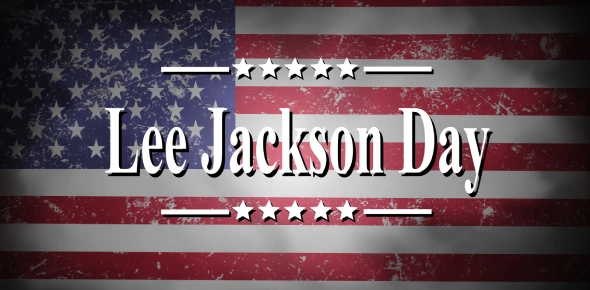Quiz: How Much Do You Know About The Conquest Of Virginia?
-
In what year did Virginia vote against secession?
-
In 1861
-
In 1865
-
In 1880
-
In 1900
-
Embark on a captivating journey through history with our quiz, "How Much Do You Know About the Conquest of Virginia?" Dive into the fascinating tale of the early exploration and colonization of the Virginia region, a pivotal chapter in the broader narrative of American history. The commonwealth of Virginia became a prominent part of the confederate states of America when it joined the confederacy during the American civil war. As a Southern slave-holding state, Virginia held a State convention to deal with the secession crisis. Do you know American history that well? If yes try to complete our quiz successfully. Whether you're a history enthusiast or just curious about the roots of America's founding, this quiz offers a chance to journey back in time and explore the complexities of colonial Virginia. Challenge yourself with questions that span the early 17th century, and discover the events that laid the foundation for the future United States. Share your results, compare scores with friends, and immerse yourself in the rich tapestry of the Conquest of Virginia. Get ready to uncover forgotten tales, heroic exploits, and the enduring legacy of this pivotal period in American history.
(177).webp)
Quiz Preview
- 2.
What event took place on May 24th, 1861?
-
The rebellion of slaves in that Sate
-
The abolishment of slavery in that state
-
The capture of Alexandria
-
The agriculture emancipation in that state
Correct Answer
A. The capture of AlexandriaExplanation
On May 24th, 1861, the event that took place was the capture of Alexandria. This implies that Alexandria, a specific location, was seized or taken control of by someone or a group. The other options provided, such as the rebellion of slaves, the abolishment of slavery, and the agriculture emancipation, do not directly correspond to the event of capturing Alexandria.Rate this question:
-
- 3.
What is Robert E .Lee known for?
-
For defending Richmond
-
For creating the American flag
-
For writing the national anthem
-
For defending Alexandria
Correct Answer
A. For defending RichmondExplanation
Robert E. Lee is known for defending Richmond. Richmond was the capital of the Confederate States of America during the American Civil War, and Lee served as the commanding general of the Confederate Army. He played a crucial role in defending Richmond from Union forces, leading several successful campaigns and battles in the area. Lee's defense of Richmond is considered one of his most significant contributions to the Confederate cause during the war.Rate this question:
-
- 4.
Who used to live in the white house of the Confederacy?
-
Senator Jefferson Davis
-
Prisoners
-
Rebels
-
Refugees
Correct Answer
A. Senator Jefferson DavisExplanation
The correct answer is Senator Jefferson Davis. He used to live in the white house of the Confederacy during the American Civil War. As the president of the Confederate States of America, Davis resided in the white house in Richmond, Virginia, which served as the official residence and executive office. It was the center of political activities for the Confederacy during that time.Rate this question:
-
- 5.
Who was John Brown?
-
He was a radical abolitionist.
-
He was a man of the church.
-
He was a politician.
-
He inspired the American constitution.
Correct Answer
A. He was a radical abolitionist.Explanation
John Brown was a radical abolitionist known for his strong opposition to slavery. He believed in taking direct action and even resorted to violence in his fight against slavery. Brown's actions, such as the raid on Harpers Ferry, made him a controversial figure during his time. His radical beliefs and actions played a significant role in the abolitionist movement and ultimately contributed to the tensions that led to the American Civil War.Rate this question:
-
- 6.
What major event happened in 1860?
-
The country was divided in 2.
-
The republic party split into 2 fractions.
-
The democratic party split into Northern and Southern fractions.
-
Democracy was much needed in the states.
Correct Answer
A. The country was divided in 2.Explanation
In 1860, a pivotal event occurred as Southern states seceded from the Union, marking a critical point in American history. This division set the stage for the American Civil War, a conflict that profoundly shaped the nation's trajectory. The split into Northern and Southern factions during this period had far-reaching consequences, influencing the course of democracy and leading to a transformative chapter in the country's development.Rate this question:
-
- 7.
Where did John Brown die?
-
In Charles Town, Virginia
-
In Baltimore, Maryland
-
In Washington DC
-
In German town
Correct Answer
A. In Charles Town, VirginiaExplanation
Abolitionist John Brown died in Charles Town, Virginia on 2 December 1859 by being hanged.Rate this question:
-
- 8.
Who was nominated by the Southern Democrats as a candidate for the U.S elections in 1860?
-
Bruce Livingstone
-
John Smith
-
John C Breckenridge
-
James Brown
Correct Answer
A. John C BreckenridgeExplanation
John C Breckenridge, Vice President of Kentucky, with President Buchanan's support, was nominated by the Southern Democrats as a candidate for the U.S elections in 1860.Rate this question:
-
- 9.
When were the Confederate States of America formed?
-
In 1861
-
In 1870
-
In 1880
-
In 1900
Correct Answer
A. In 1861Explanation
The Confederate States of America were formed in 1861. This was the year when several southern states seceded from the United States following the election of Abraham Lincoln as president. These states formed their own government and constitution, establishing the Confederacy. The formation of the Confederate States of America ultimately led to the American Civil War, which lasted from 1861 to 1865.Rate this question:
-
- 10.
How many states formed the confederates States of America?
-
11
-
8
-
10
-
12
Correct Answer
A. 11Explanation
The Confederate States of America was formed during the American Civil War by 11 states that seceded from the Union. These states were South Carolina, Mississippi, Florida, Alabama, Georgia, Louisiana, Texas, Virginia, Arkansas, North Carolina, and Tennessee.Rate this question:
-
Quiz Review Timeline (Updated): Mar 5, 2025 +
Our quizzes are rigorously reviewed, monitored and continuously updated by our expert board to maintain accuracy, relevance, and timeliness.
-
Current Version
-
Mar 05, 2025Quiz Edited by
ProProfs Editorial Team -
Feb 22, 2018Quiz Created by
Anouchka
How Much Do You Know About Lee-Jackson Day? Quiz
Test your knowledge on Lee-Jackson Day, focusing on its history, key figures, and significant changes over the years.
Questions:
10 |
Attempts:
10 |
Last updated:
Jan 27, 2025
|
Virginia Insurance Exam Quiz
The Virginia Insurance Exam quiz is a quiz which should be taken by people of virginia for the benefits of their insurance in their own part of America. Different parts have...
Questions:
10 |
Attempts:
625 |
Last updated:
Jan 31, 2023
|
Trivia On Virginia Motor License! Quiz
Do you know anything about the Virginia Motor License? In Virginia, your driver’s license expires on your birthday every eight years. In Virginia, the DMV will deliver you...
Questions:
10 |
Attempts:
233 |
Last updated:
Mar 21, 2023
|
Virginia History: Trivia Facts Quiz!
How much do you know about Virginia history? Do you think you can pass this quiz? For this quiz, you should know what city in Virginia was the capital of the confederate states...
Questions:
10 |
Attempts:
296 |
Last updated:
Mar 19, 2023
|
How Northern Virginia Are You?
Explore how well you know Northern Virginia through this engaging quiz! Test your knowledge on local pronunciation, military bases, traffic hotspots, and historical sites. Perfect...
Questions:
25 |
Attempts:
634 |
Last updated:
May 28, 2025
|
LTD Management Company - Virginia Marriott Hotels
LTD Management Company owns and manages 16 Marriott hotels in Virginia from Richmond to Norfolk.
Now it's time to test your knowledge about our hotels. The answers can be...
Questions:
25 |
Attempts:
122 |
Last updated:
Apr 24, 2024
|
 Back to top
Back to top








